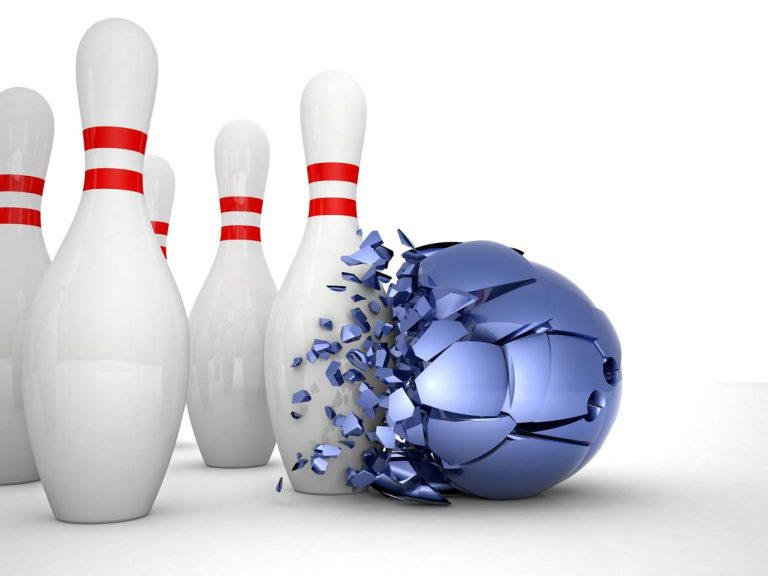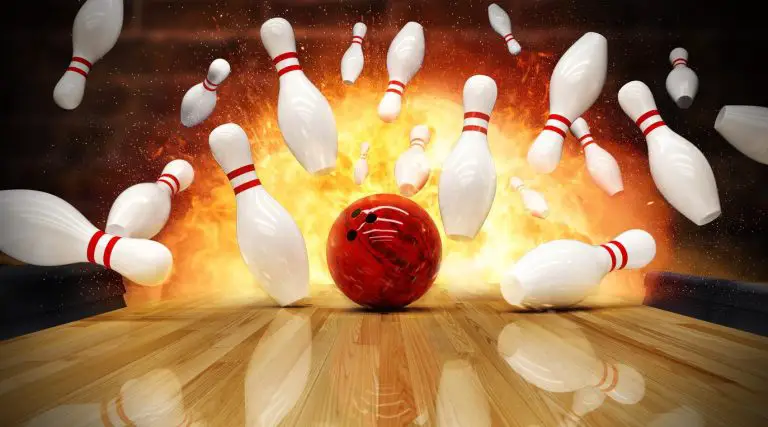What is the Highest Score in 5 Pin Bowling: A Perfect Game
Five-pin bowling, a more difficult variation of the sport with unique scoring, offers an engaging challenge for players looking to master its nuances. Unlike its ten-pin counterpart, the maximum score attainable in a game of five-pin bowling is 450 points, often referred to as a “perfect game.”
Because the balls are smaller and pins further apart, accuracy is everything. You get three rolls, but it’s much harder to knock down more than 1 pin with each roll compared to 10 pen bowling, with its tighter pin setup.
Key Takeaways
- A perfect game in five-pin bowling is 450 points.
- 12 strikes are needed to get this score.
- Practice and skill development is crucial.
Understanding Five-Pin Bowling
Five-pin bowling offers a unique challenge with its specific scoring system and gameplay structure that distinguishes it from the more widely-known ten-pin bowling.
Basics of the Game
Your objective in five-pin bowling is to knock down as many pins as possible over a series of frames. A set consists of ten frames, and in each frame, you have up to three attempts to knock down five pins arranged in a V shape. The pins are smaller and lighter than in ten-pin bowling, requiring a different approach to ball placement and force.
Scoring System
The scoring in five-pin bowling can seem complex at first, but it’s logical once you understand the value assigned to each pin. The center pin is worth 5 points, while the pins immediately to the left and right are worth 3 points each, and the two outermost pins are 2 points each.
A perfect strike—knocking down all pins in the first attempt—earns you 15 points. Then the total from the next 2 throws are added to that frame’s score. If you knock down all the pins in two tries, it’s called a spare, which also yields a base score of 15 points, but with additional points from the next ball you roll.
An open frame—failing to knock down all the pins in a frame—simply nets you the total points of pins knocked down. The scoring system rewards precision and strategy, with a perfect game score being achieved by rolling 12 consecutive strikes, showcasing the skill and accuracy of play at the highest level.
The bonus score rules are just as they are in 10-pin bowling. The difference is the point value of each pin.
Historical Context and Growth
When you explore the high scores in 5-pin bowling, understanding its inception and regional growth adds context to its present-day status.
Origins of Five-Pin Bowling
5-pin bowling was invented in 1909 by Thomas F. Ryan in Toronto, Ontario, Canada. This variation of the sport was initially designed as a response to customers who found the original 10-pin game too strenuous. It quickly became a popular sport across Canadian regions, establishing itself as a staple in Canadian recreation.
Popularity and Regional Differences
As you look at the development of 5-pin bowling, note that it remained largely within Canada, where it evolved separately from the more popular 10-pin bowling. The rules of the game, standardized by Ryan, made the sport uniquely Canadian, and while it remains a popular activity in Canada, it has not achieved the same level of popularity in the rest of North America.
Maximizing Scores in Five-Pin Bowling
In five-pin bowling, the ideal goal is to achieve the perfect score of 450 points, which involves precision and practice, practice, practice.
Strategies for High Scores
To boost your score in five-pin bowling, focus on optimizing each frame by aiming for strikes or spares. A strike, knocking down all five pins with the first ball, yields the most points. Your next two balls are added to the strike score, so consecutive strikes increase your total points.
- Consistency is key: Aim for the middle pin (headpin) to maximize your chances of a strike.
- Seize opportunities: If a strike seems unlikely, aim for a high-point spare. For instance, the two corner pins (left and right “3-pins”) are each worth 3 points.
Common Techniques and Terminology
Understanding and mastering common techniques enhances your ability to score high.
- Straight Ball vs. Hook: Straight throws are much more common and effective in 5-pin bowling
- Pin Point Value:
- Headpin – 5 points
- Center Left and Right 3-pins – 3 points each
- Corner Left and Right 2-pins – 2 points each
| Pin Formation | Total Points |
|---|---|
| Spare | 15 + next ball |
| Strike | 15 + next two balls |
Competitive Five-Pin Bowling
In competitive five-pin bowling, you’ll find a structured environment with organized tournaments and leagues, following established regulations and standards.
Tournaments and Leagues
Tournaments are pivotal in competitive five-pin bowling. They range from local competitions to major tournaments with significant recognition. One key event to be aware of is the Canadian Open, a renowned tournament that draws top bowlers from across the country.
- Local Tournaments: Often held within a single bowling center or city.
- Provincial Tournaments: Larger in scale, often qualifiers for nationals.
- National Tournaments: The top tier of competition, including events like the Canadian Five-Pin Bowlers’ Association (C5PBA) nationals.
Leagues, on the other hand, offer regular competitive play. Whether you join a league at the Toronto Bowling Club or another local alley, you’ll compete weekly under a standard set of rules, often leading to playoffs and league championships.
- Weekly Play: Engage in regular matches to accumulate points.
- Playoffs: The end-of-season culmination where the highest scorers from the weekly sessions compete.
Certification and Regulation
For a fair and standardized environment, the C5PBA oversees the certification process and regulations of the sport.
- Certification Process:
- Bowlers: They must meet certain standards of play.
- Coaches and Officials: Required to undergo training and accreditation.
- Regulations:
- Equipment: Specifications for balls, pins, and lanes are strictly monitored.
- Playing Rules: A detailed rulebook governs gameplay, outlining scoring, fouls, and more.
The C5PBA’s role ensures that the integrity of competitive five-pin bowling is preserved across tournaments and leagues. Your participation in certified leagues or tournaments guarantees a level playing field and adherence to the sport’s high standards.






